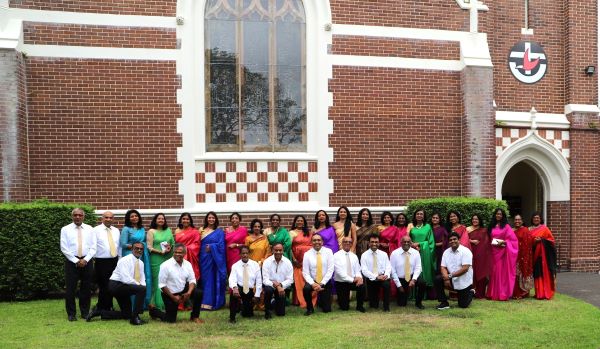CEB proposed wind farm facilities in Mullikulam: A response – By Bernard Fernando

 In my recent article that appeared in a foreign Sri Lankan news website on the above subject, I highlighted the obvious disadvantages of Wind power (such as high Capital expenditure for Machinery and Construction; high Repair and high Maintenance costs to access machinery located at higher altitudes using specialized machinery and labour; effects arising from vagaries of nature – Rusting and Cyclones etc.; larger space required, discouraging human habitat and the more fluctuating nature of wind as a source rather than the Sun which in itself is a more permanent source of power) over Solar Power. Having stated so, I requested the readers to tax their ‘Common sense’ and /or Grey matter to highlight the corresponding advantages/disadvantages of Solar Power.
In my recent article that appeared in a foreign Sri Lankan news website on the above subject, I highlighted the obvious disadvantages of Wind power (such as high Capital expenditure for Machinery and Construction; high Repair and high Maintenance costs to access machinery located at higher altitudes using specialized machinery and labour; effects arising from vagaries of nature – Rusting and Cyclones etc.; larger space required, discouraging human habitat and the more fluctuating nature of wind as a source rather than the Sun which in itself is a more permanent source of power) over Solar Power. Having stated so, I requested the readers to tax their ‘Common sense’ and /or Grey matter to highlight the corresponding advantages/disadvantages of Solar Power.
As regards the common storage problem, I solicited technical opinion to throw light on the matter.
Alluding to my request, I received a positive and a fair response from a concerned Sri Lankan reader living down under, giving a Comparative analysis between Solar Power and Wind power as an AI generated document and I am grateful to his concern for Sri Lanka.
Since it would greatly help our decision- making authorities in the Cabinet, the experts in the CEB, MPs in the Parliament, Academics, Professionals, other politicians and the concerned general public, I consider it pertinent to share the contents of the documents as given below.
“Comparison of cost, social and environmental benefits of solar power and wind power
- Cost Comparison:
Initial Installation Costs:
- Solar Power:
- Solar panels typically have a higher upfront cost due to the equipment (solar panels, inverters, batteries if off-grid).
- The cost of solar panels has decreased significantly in recent years, but it still depends on location, scale, and system size.
- Average cost per watt for solar installation: around $2.50 to $3.50 (in the U.S.).
- Wind Power:
- Wind turbines also have high upfront installation costs, but the price is competitive with solar, especially for large-scale installations.
- Onshore wind projects tend to cost between $1,200 and $2,500 per installed kilowatt, depending on the location and scale.
- Offshore wind projects tend to be more expensive due to installation complexity and technology.
Operational and Maintenance Costs:
- Solar Power:
- Solar has low operational and maintenance costs. Panels require minimal maintenance (e.g., occasional cleaning).
- The average operational costs are relatively low, with some components needing replacement (inverters) every 10-15 years.
- Wind Power:
- Wind turbines require regular maintenance due to moving parts (blades, gearbox, etc.), which increases long-term operational costs.
- Maintenance can be expensive, particularly in remote or offshore locations, and turbines may need parts replacement over time.
Levelized Cost of Energy (LCOE):
- Solar Power:
- The LCOE for solar is typically lower than that of wind in some regions (especially sunny areas) because of lower installation and maintenance costs.
- Wind Power:
Wind is generally more cost-effective in areas with high and consistent wind speeds. The LCOE of wind can be competitive, especially for larger installations or in regions with favorable wind conditions.
- Social Benefits Comparison:
Job Creation:
- Solar Power:
- Solar power generates jobs in the installation, maintenance, manufacturing, and design sectors.
- is Solar energy industries are labor-intensive, and jobs can be created locally in areas where installation needed
- Wind Power:
- Wind power also creates jobs, particularly in the manufacturing of turbines and the construction of wind farms.
- Like solar, wind energy supports local economies, especially in rural areas, where wind farms are often located.
Energy Access:
- Solar Power:
- Solar power can be deployed on a small scale (e.g., residential rooftops), making it accessible for individuals, communities, and off-grid areas.
- It helps in providing electricity to remote and underserved regions where traditional grid access is limited.
- Wind Power:
- Wind power typically requires larger-scale infrastructure and is more suited for regions with high wind resources.
- While it can generate significant amounts of electricity, it’s less flexible in providing access in isolated, off-grid areas compared to solar power.
Energy Independence and Security:
- Solar Power:
- Solar energy promotes energy independence as individuals or communities can install systems that reduce reliance on external power sources.
- It helps diversify the energy mix and stabilize local energy prices.
- Wind Power:
- Wind also contributes to energy security by providing an alternative to fossil fuels.
- Large-scale wind farms can be integrated into national grids, reducing dependence on imports and fossil-based generation.
- Environmental Benefits Comparison:
Carbon Footprint:
- Solar Power:
- Solar panels have minimal direct carbon emissions during operation. However, manufacturing panels does involve emissions, particularly from mining and processing raw materials (e.g., silicon, aluminum).
- Over a panel’s lifetime, solar power is a net carbon reducer because it generates clean electricity.
- Wind Power:
- Wind energy is also a very low-emission energy source during operation.
- The carbon footprint of manufacturing wind turbines is higher than that of solar panels, but this is offset over the long term by the clean energy produced.
Land and Resource Use:
- Solar Power:
- Solar panels require land (or rooftops), but they can be installed on rooftops, minimizing land-use concerns.
- Large solar farms may have significant land use, but they often co-exist with agriculture (agrivoltaics) or use areas not suited for other activities.
- Wind Power:
- Wind farms require large areas of land, especially for onshore installations. However, wind farms can also coexist with farming and grazing, as wind turbines occupy only a small portion of the land.
- Offshore wind requires significant infrastructure and space but avoids land use conflicts.
Wildlife Impact:
- Solar Power:
- Solar farms typically have minimal impact on wildlife, though large installations can alter ecosystems if not carefully planned.
- Solar panels do not directly impact wildlife unless they are placed in sensitive habitats.
- Wind Power:
- Wind turbines can pose a threat to birds and bats if not properly sited. However, advancements in turbine design and siting have reduced this impact.
- Wind farms have more direct ecological impacts due to the size of the infrastructue.
Water Usage:
- Solar Power:
- Solar panels require minimal water usage during their operation.
- Wind Power:
- Wind power also uses little to no water, making it highly sustainable compared to fossil fuel-based power generation that requires significant water resources.
Conclusion:
- Cost: Solar tends to have lower upfront costs for small-scale systems and lower maintenance costs, but the cost-effectiveness of both solar and wind varies by location.
- Wind may be more cost-effective at a larger scale in areas with high wind speeds, but offshore wind can be more expensive.
- Social Benefits:
- Both technologies create jobs and promote energy security. Solar has an edge in providing energy access in remote areas, while wind can benefit rural communities with larger-scale installations.
- Environmental Benefits:
- Both technologies have low carbon emissions during operation and can co-exist with land use. Wind may have a higher wildlife impact than solar, but both technologies have minimal water usage and contribute to reducing dependence on fossil fuels.
Ultimately, the best choice depends on specific geographic and environmental conditions, as well as the scale of the installations.”
I opine that the issue of scale will largely affect the feasibility of wind power in the long run for a small Island Country like Sri Lanka.
The readers will however note that the storage issue has not been reckoned in the above AI document.
Bernard Fernando
Moartuwa
Email : fernadobernard81@gmail.com





















